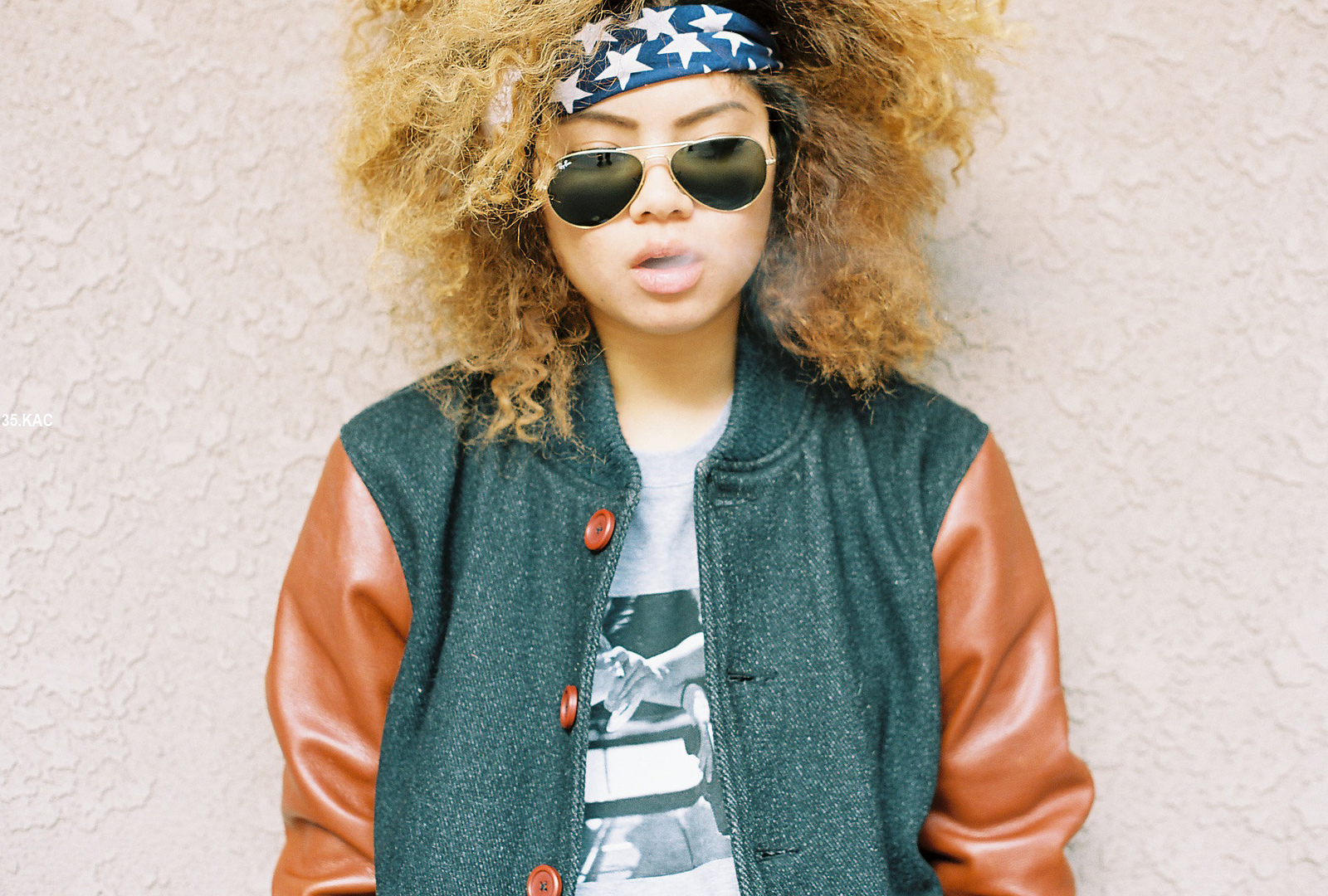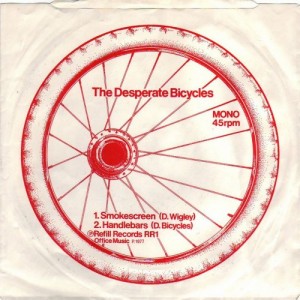
The Aesthetics of Nostalgia
by Emily Frisella | June 9, 2015
A man in a voluminous fur coat riding a child’s scooter rolls towards the camera in slow motion. Behind him, a crowd of people decked out in hipster kitsch follow on bicycles, rollerblades, and rolling office chairs. This is the opening shot of the music video for ‘Thrift Shop’, Macklemore & Ryan Lewis’s 2012 anthem. ‘Savin’ my my money and I’m hella happy that’s a bargain,’ Macklemore raps, strutting past racks of discount clothing. ‘Fifty dollars for a T-shirt — that’s just some ignorant bitch / I call that getting swindled and pimped / I call that getting tricked by a business / That shirt’s hella dough / And having the same one as six other people in this club is a hella don’t’. With enough swagger, cast-off clothes become enviable markers of cool.
Macklemore echoes the sentiments of those who believe that ‘thrifting’, that archetypal hipster pastime, offers an alternative to mainstream consumerism. For the hipster, wearing ‘your granddad’s clothes’ is both common-sense and anti-establishment. Yet the song’s emphasis on the sheer accumulation of things — ‘They had a broken keyboard, I bought a broken keyboard,’ Macklemore raps — suggests that the hipster affinity for dated and often useless accessories simply creates a demand for new kinds of products.
The advent of Ebay and Etsy in the early 2000s created an online marketplace where nostalgics could purchase refurbished typewriters, Walkman cassette players and rotary-dial telephones, items that symbolically subverted the modernity of the tech boom. In the years when mobile flip-phones were giving way to smart-phones, vintage rotary-dial phones became so popular that home-goods stores began to market new, push-button phones designed to mimic their ‘retro’ look.
A political awakening among young, liberal voters heralded the election of President Obama in 2008. This portion of the electorate pinned Obama’s iconic HOPE, CHANGE, and PROGRESS posters to their dorm room walls. The image of Obama, stenciled in red, white and blue by artist Shepard Fairley, recalled the mid-century pop art of Andy Warhol. Obama himself drew comparisons to this time period, drawing on another young, charismatic presidential candidate: John F. Kennedy.
Obama’s 2008 campaign managed to link images of traditional Americana with a progressive political agenda. The 1960s were a time of great social change. To many young Americans, Obama’s campaign suggested that the decade following 2008 could be one, too. For liberal, twenty-something hipsters, this was an appealing message. Yet it is a nostalgia for vintage aesthetics, not a passion for progressive politics, that has become the stand-out feature of contemporary hipster culture,
In his 2010 essay ‘What Was The Hipster?’, Mark Grief attempted to write an ethnography of the notoriously elusive American hipster. Grief’s definition of the ‘contemporary hipster’ borrows social critic Thomas Frank’s idea of the ‘rebel consumer,’ ‘the person who, adopting the rhetoric but not the politics of the counterculture, convinces himself that buying the right mass products individualizes him as transgressive.’ The rebel consumer who supports environmentalism does not stop driving; instead, the rebel consumer buys a Prius.
Rebel consumerism and hipster aesthetics are exemplified by the thousands of images posted on Lookbook, a social networking site that bills itself as “the global community for the fashion-conscious.” Select a search for photos tagged as ‘retro’, and glamour shots of the stylish will scroll by. If we take Mark Grief’s model of the hipster as ‘rebel consumer’, then Lookbook is certainly hipster. The images that users post are self-indulgent, yet also self-aware; images that construct vintage cool from modern mass-market products.
Mimicking the pages of a fashion magazine, bloggers can list the source of each clothing item. A few bloggers tag blouses, shoes, and handbags as ‘vintage’ or ‘thrifted’ — but, more often, their retro-style clothes are from H&M, ASOS, American Apparel, Urban Outfitters, and Forever 21. For those who can afford not to buy their clothes second-hand, fast-fashion retailers offer distressed chambray shirts and trendy “ugly sweaters” at several times the price of their thrift store equivalents.
Modcloth, an online clothing retailer specializing in vintage, retro, and ‘indie’ clothing, has chosen to actively align its brand with progressive feminist politics. In August 2014, the company signed the ‘Heroes Pledge for Advertisers,’ promising to ‘do our best not to change the shape, size, proportion, color and/or remove/enhance the physical features, of the people in our ads in post-production’. Modcloth publicised the pledge alongside its #Fashionmatters campaign, launching a monthly ‘Casting Call for All’ contest that rewards aspiring models for ‘creativity […] while staying consistent with ModCloth’s values of self-respect and being the best version of yourself’. Modcloth awarded the April prize to a stand-up comedian from Ohio who identifies as a trans woman. In doing so, the company showed its active support for an inclusive, intersectional feminism, rejecting rigid mid-century definitions of femininity and womanhood — while nonetheless embracing the aesthetics of mid-century fashion.
American Apparel, who successfully marketed ethical employment practices to a base of upper-middle-class, too-cool-for-school consumers, offers another example of corporate pretensions to social activism. In 2003, the company launched its ‘Legalize LA’ campaign supporting immigration reform, and in 2008, it premiered a similar line of ‘Legalize Gay’ t-shirts. These goodwill campaigns translated to tangible brand loyalty among liberal millennials.
In conjunction with the concept of rebel consumerism, this kind of political branding raises the question: are such companies truly the champions of social change, or are they simply exploiting social movements for financial gain? Companies who build their brand around subversive consumerism seem to place themselves in a tenuous position, risking disapproval in order to ‘take a stand’. But a company who knows its target market is risking very little. Intersectional feminists who shop at Modcloth and affluent liberals who buy American Apparel’s iconic t-shirts are paying to visibly participate in a political movement they already support; teens who buy plastic ‘hipster glasses’ are paying for the passé symbols of a subversive aesthetic gone mainstream.
All social and political movements develop their own codes and symbols, but the trouble with hipster culture is this: once the aesthetics are stripped away, there’s no coherent political statement to be found.




